TVR: The Full Story
Introduction
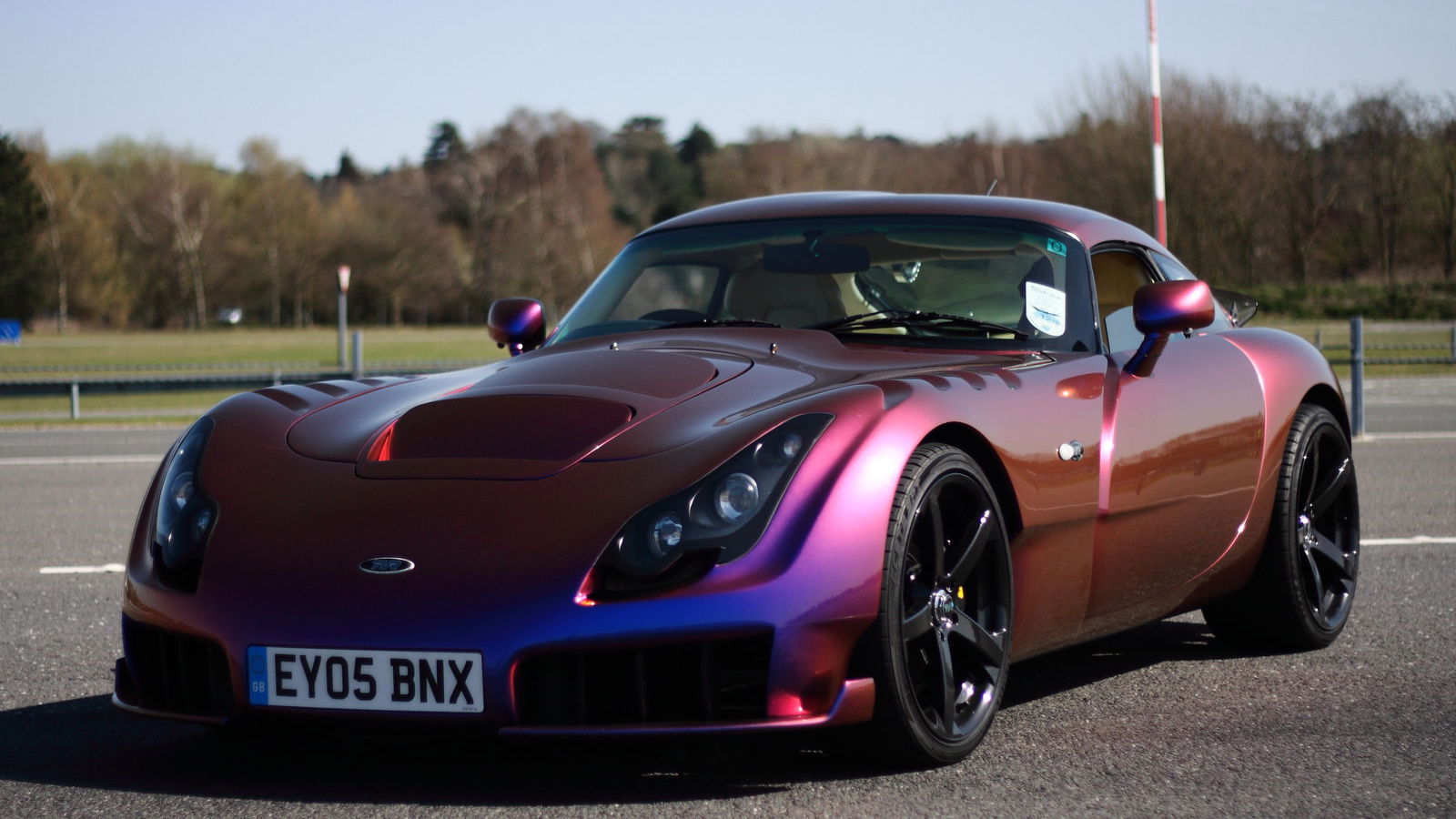
Introduction
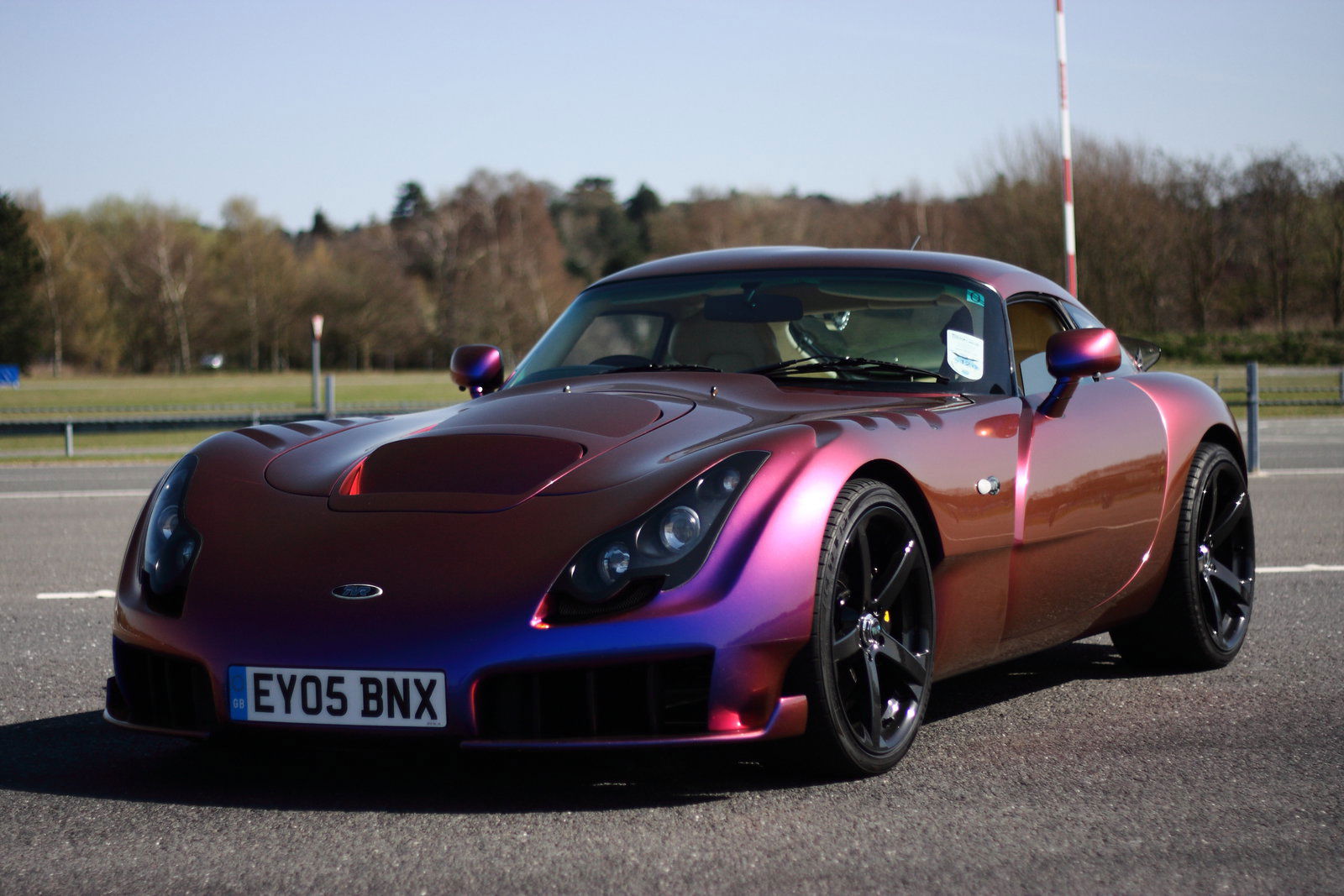
What do you think is the most British car brand in history? Some of you might say Rolls-Royce, Bentley, Aston Martin or Land Rover. Those brands are the epitome of the British being known for being luxurious and elegant, as they all make either huge, heavy and luxurious grand touring cars with exteriors as smooth and flat as a quartz table top with interiors and seats draped in some kind of leather from some endangered animal or wood from the deepest parts of the Amazon on the dashboard and etc.
But there is another part of the British personality where the people love to have fun, drink and let themselves loose. Those who love to hang out in pubs, sing and talk over the top of their lungs and those who are carefree and love to hang their rear loose without thinking twice. You might say McLaren fits into this, as their cars aren’t luxurious and more focused to being lightweight, track-focused and lapping the Nurburgring in under seven minutes. But that is equivalent to a British party-goer at a fancy party with rules and restrictions. So what British car manufacturer fits this description?
A car company that perfectly fits this description of being carefree and not caring about the rules is TVR. They have made cars that are more appealing to the fun driver that does not care about safety and try to do the most extreme things on the racetracks despite risking their lives. They make cars that were stripped to the chassis, very lightweight, put performance and racing priorities as high as safety priorities, and made cars that are not track focused, but driver focused.
Founding Days

Trevor Wilkinson was born on 14 May 1923 in Blackpool, UK. He left school at 14 to major in Engineering and got an apprenticeship in a garage nearby. In 1946, he purchased a workshop in Beverly Grove, UK to start an engineering business. It was on that very day he founded TVR, initially called TrevCar Motors. The TVR name is an initial of Trevor Wilkinson’s name, only shortened to TVR. One year later, local auto enthusiast Jack Pickard joined TVR.
Three years later, TVR built its first car. It had the live axle from a Morris Eight, paired with an independently designed trailing arm style axle. The engine was sourced from a 1936 Ford van tweaked and tuned to produce 35HP. But when the car was still under development, it was involved in a crash before the bodywork was even installed. After the crash, they developed the body made of aluminum and painted the car in British Racing Green. It was sold for 325 British Pounds
TVR decided to build a second chassis after the first one was sold. Most of the parts remained the same compared to the initial car, only it implemented a wishbone suspension. It was given a body refresh and some of the internals were improved. A local man purchased the second chassis for racing purposes, but eventually registered for road use. A third chassis was also produced, powered by a 35HP engine from an Austin A40. It was used for Wilkinson’s daily transport.
Other Developments
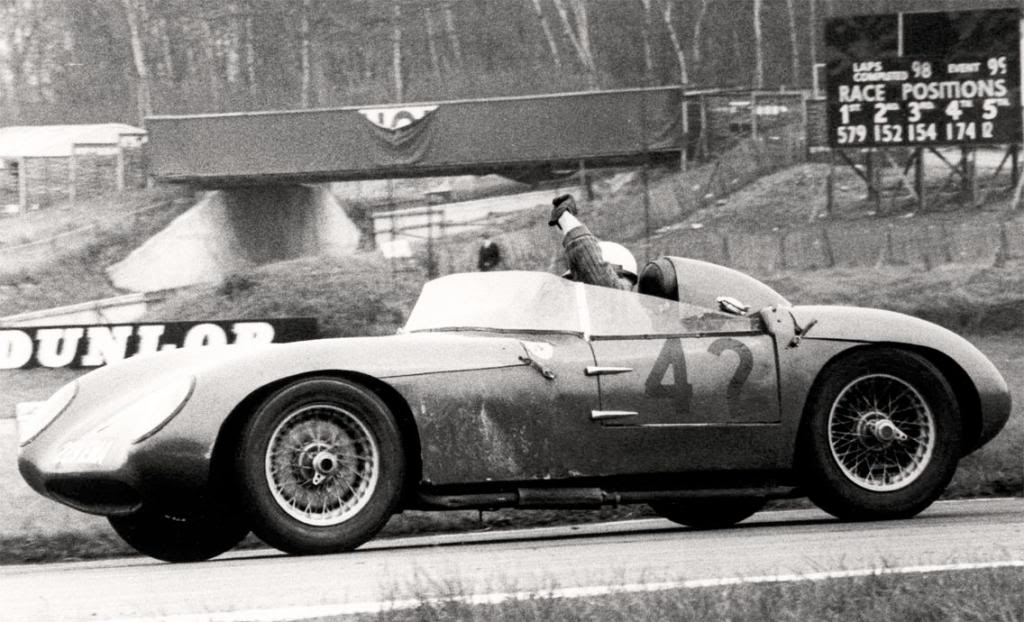
In 1953, TVR worked on redesigning its chassis which was intended to be compatible with the engine, gearbox, and other components from the Austin A40, TVR’s base car. It did not come with an upper body frame and was sold with a fiberglass body. Approximately twenty were built, but only three were purchased as a kit with the fiberglass body shell that Wilkinson had originally selected. These three cars used an RGS Atalanta body kit. With the it included in the kit, they were named the “TVR Sports Saloon” It was also on the Sports Saloon that TVR’s badge appeared, designed by a young art student and Wilkinson’s friend, John Cookson.
The first chassis of the TVR Sports Saloon rolled off the production line on the spring of 1954, and Wilkinson first campaigned it in the Morecambe Rally from 21 to 23 May. He used it in a number of other events to let the world know who TVR were, and would drive the car regularly in competition and on the road over the next eight years. As for the production version, the car’s chassis were all built to the customer’s specification, and they all left the factory different. They had an option of any engine that they desired as long as it was available and compatible with its chassis.
In 1956, Wilkinson decided to develop a car which featured the body style that belonged to the original TVR built, only implementing its newly developed chassis. Despite never given a name, it was referred to the TVR Open Sports. The first example of the car rolled out with a red bodywork and was fitted with a Coventry Climax engine. Approximately only three or four were built, but the true number was not known due to insufficient records. One of the cars was provided to Autosport Magazine writer Francis Penn for testing. He drove it at Aintree and described its steering response and grip as “superb”.
After the unveil of the TVR Open Sports, Wilkinson decided to further improve the car based on customer feedback. He installed a fixed-head notch back style body. Because of that, the TVR Coupe was born. It was offered with the choice of several engines, including the Ford 100E side valve, the Coventry Climax FWA, and the original MGA engine. When the Ford side valve was selected, the customer had the further option of fitting a supercharger.
The TVR Grantura
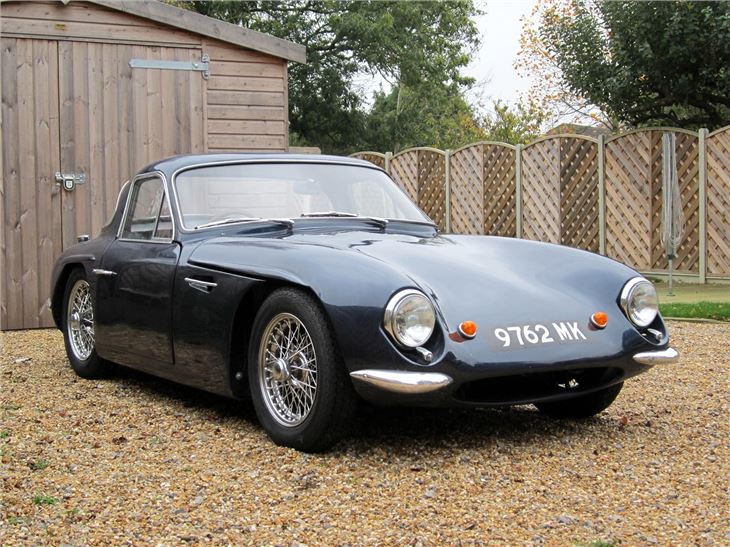
TVR then produced the Grantura, which featured a fastback style body instead of a notch back styled body fitted onto the same chassis as the TVR Open Sports and Coupe. Engine options included the Ford 100E sidevalve, either normally aspirated or supercharged, the Ford 105E OHV unit, two different Coventry Climax units, or the MGA’s BMC B-series. The interior of the Grantura was pretty cramped, with the short doors and 17 inch-diameter steering wheel proving impediments to enter the car. Climax-powered cars would be finished with a leather interior, while cars with the lower-specification engines were trimmed with vinyl. The Grantura was sometimes sold under the Jomar name, only with a TVR badge in the front.
The car went through several updates over its course of its lifetime. After a few years of the Grantura in production, Wilkinson decided to give the car an update. The Series II had MGA engines as standard but again customers could choose from a variety of power units. The IIA used the 1622 cc MGA Mark II or Ford 1340 CC engine and front disc brakes were standard. Rack and pinion steering was standardized. In the end, around 400 were built.
Fall of TVR
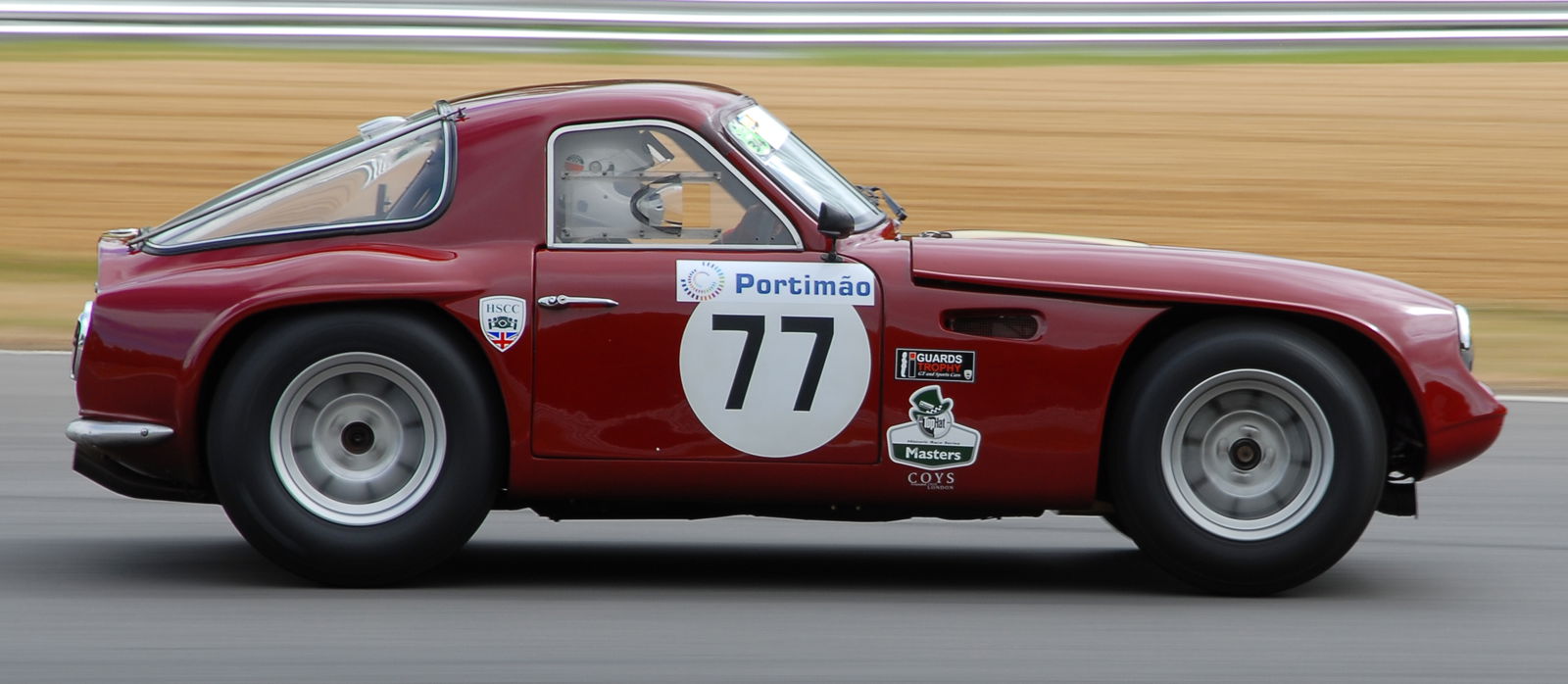
In October of 1963, Richard Monnich, Jack Griffith, and race mechanic George Clark finished the prototype Griffith, created by swapping a Ford 289 V8 into a Grantura Series 3. The performance of the car exceeded expectations, although the brakes and chassis had been left untouched and, by all accounts, were very incompatible when paired with the large engine. In a short period of time, David Hives at the TVR factory built a second prototype that was better developed and better finished, as well as three engine-less cars destined for Griffith’s business in New York.
Amidst the Griffith production which required the TVR factory to build cars at a greater rate than ever before, Major Timothy Knott was hired as the managing director in August 1964. His military background and strict enforcement of order and workday schedule prevented him from integrating himself with most of the factory workers. Knott subsequently hired Ralph Kissack, also from a military background, and whose family was involved with Peel Engineering Company.
But sadly, in 1964, Jack Griffith was not able to import cars to the United States due to a dock strike. Griffith was then unable to meet his financial obligation to Ford, which stopped supplying drivetrain components. Ties with TVR were also then severed, and the company was no longer able to continue. In September 1964, TVR announced that the company would be stopping production and will closing the factory. TVR went into liquidation in November of that year.
New Ownership
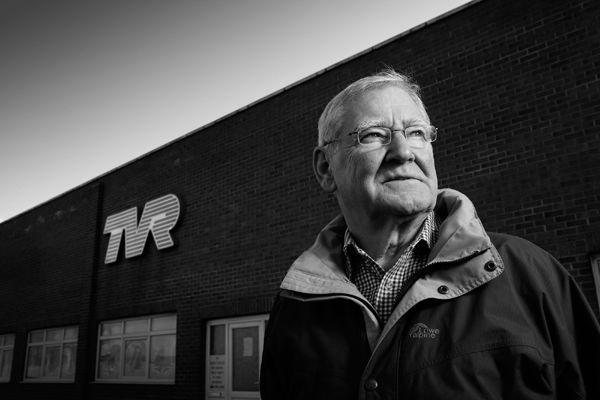
In late 1965, Arthur Lilley and his son Martin Lilley purchased TVR to mitigate their personal losses of £2000 worth of TVR shares. TVR Engineering Ltd. was then formed on 30 November 1965, with Arthur as chairman. Arthur approached David Hives and offered him the position of General Manager and Senior Designs and Development Engineer, which David accepted. After two years of this arrangement, Hives asked Arthur Lilley to appoint his son Martin as managing director whilst Hives went to America to talk to Gerry Sagerman about the importation of TVRs. This ultimately resulted in Sagerman establishing TVR Cars of America, the American branch of TVR.
TVR unfortunately had no orders to fulfill, and had to deal with significant debt to suppliers. Additionally, members of previous work force had apparently stolen parts and damaged machinery out of spite when they were laid off. In the final days of 1965 and into early 1966, the new workforce gained confidence in management as it became apparent that the Lilleys were genuinely interested in the success of the business. The factory began to ramp up production of the Mk3 1800S. During the period, some partially finished cars were delivered as kits to Martin’s Barnet Motor Co. car dealer business, where they were finished.
Meanwhile, the company also gained positive publicity as Gerry Marshall had significant success in racing a factory-prepared Griffith. In America, Gerry Sagerman lamented the damage done to the TVR reputation in the US by the poor build quality and poor reliability of Jack Griffith’s V8-powered cars. After meeting the Lilleys, Sagerman agreed to be involved in importing TVRs to the US. In April 1967, he opened a small showroom and garage in Lynbrook, Long Island, and began importing TVRs as a full-time activity.
Under the Lilley Ownership
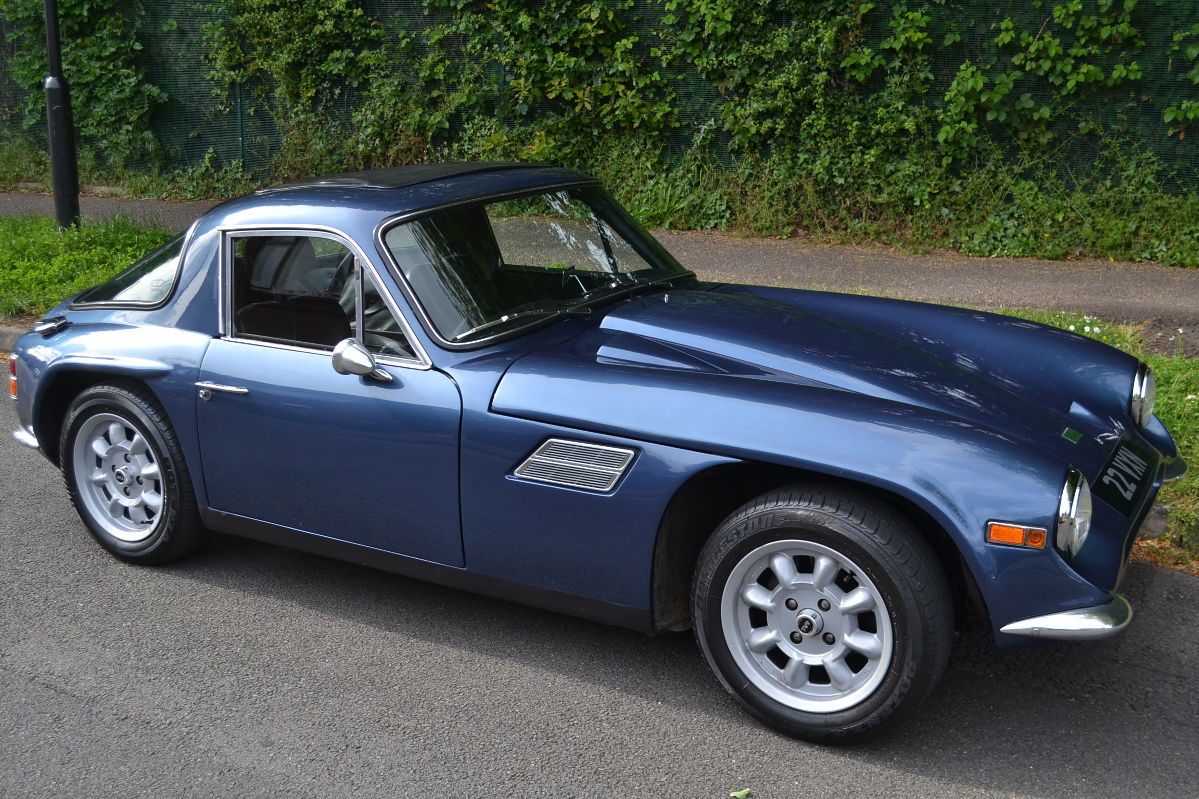
While TVR was under the Lilley administration, some new models were unveiled. One model was the TVR Vixen, unveiled in the British Motor Show in 1967. They decided to produce fiberglass bodies in-house rather than depending on suppliers due to massive amounts of debt. It was significantly lighter than competitors and came in multiple engines from a Ford Kent 4-Cylinder engine to a Rover V8 Over the course of its lifetime, four updates were given to the car and a total of 759 units were made.
After the success of the Vixen, TVR moved from their cramped factory in Hoo Hill to a 28,000 square foot facility in Blackpool, U.K. TVR also released new variants for their existing models such as a 3.0L Ford Essex V6 powered TVR Tuscan, which was intended to fill in the performance gap between the 4-Cylinder Vixens and the Vixen V8. The TVR 1300 was also released which was powered by the 1.3L engine from the TVR Spitfire.
Probably the most ridiculous marketing decision of all, TVR hired Helen Jones, a British model, to pose nude at the TVR stand on the 1970 British Motor Show to attract more publicity to the brand. (Yes, I have researched that and all the sources I looked up all confirmed that it had happened.) The following year, they did the same method only along with Susan Shaw, so there were two models. As you expected, there was a lot of outrage resulting in that stunt and officials threatened to ban TVR from the show. This, of course, only drew even more attention to the brand.
Besides the nude models in the show, TVR also unveiled their new M Series cars and the SM Estate car concept. The M series were designed to replace the Vixen lineup in the company. It had a more rigid chassis than its predecessor, provided better safety to the occupants and and could be produced more economically. Over several months, the design was finalized and the factory prepared for production. The 2500M, 3000M, 1600M, Taimar and 3000S models, as well as turbocharged variants of the V6 cars)were all built for various spans of time between 1972 and 1980.
By 1971, TVR wanted to introduce a more luxurious GT car, and they ultimately began to prototype a sports estate model. The styling was done by Harris Mann, and the engineering by Mike Bigland. Built on a TVR 2500 chassis, the car was given the development name ‘SM’ and was noted by Bigland as having started chiefly as a styling exercise with essentially no thought given to fitment of mechanical components or to driver ergonomics. The car appeared at the 1972 British Motor Show as a mostly complete but non-running roller
Second New Ownership
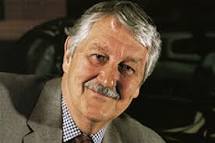
In the early 1980s, Britain was hit by an economic recession and its cars were not selling well at all. Because of this TVR was, again, on the brink of financial collapse. In December 1981, Martin Lilley transferred control of the company to businessman and TVR customer Peter Wheeler.
In the 1980s, under the ownership of Peter Wheeler, a chemical engineer who had specialised in manufacturing components for the oil industry and TVR enthusiast, TVR moved away from naturally aspirated and turbocharged V6s back to large V8s, namely the Rover V8. In time, capacity grew from 3.5 to 5 litres. In 1988 TVR sourced a 5.0 litre Holden V8 through Tom Walkinshaw at Holden Special Vehicles. The engine was installed in the TVR White Elephant, a prototype car built for Wheeler by John Ravenscroft. The Holden powered TVR White Elephant was later replaced by the Rover V8 powered Griffith prototype.
Under the Wheeler Ownership, the Golden Age of TVR.
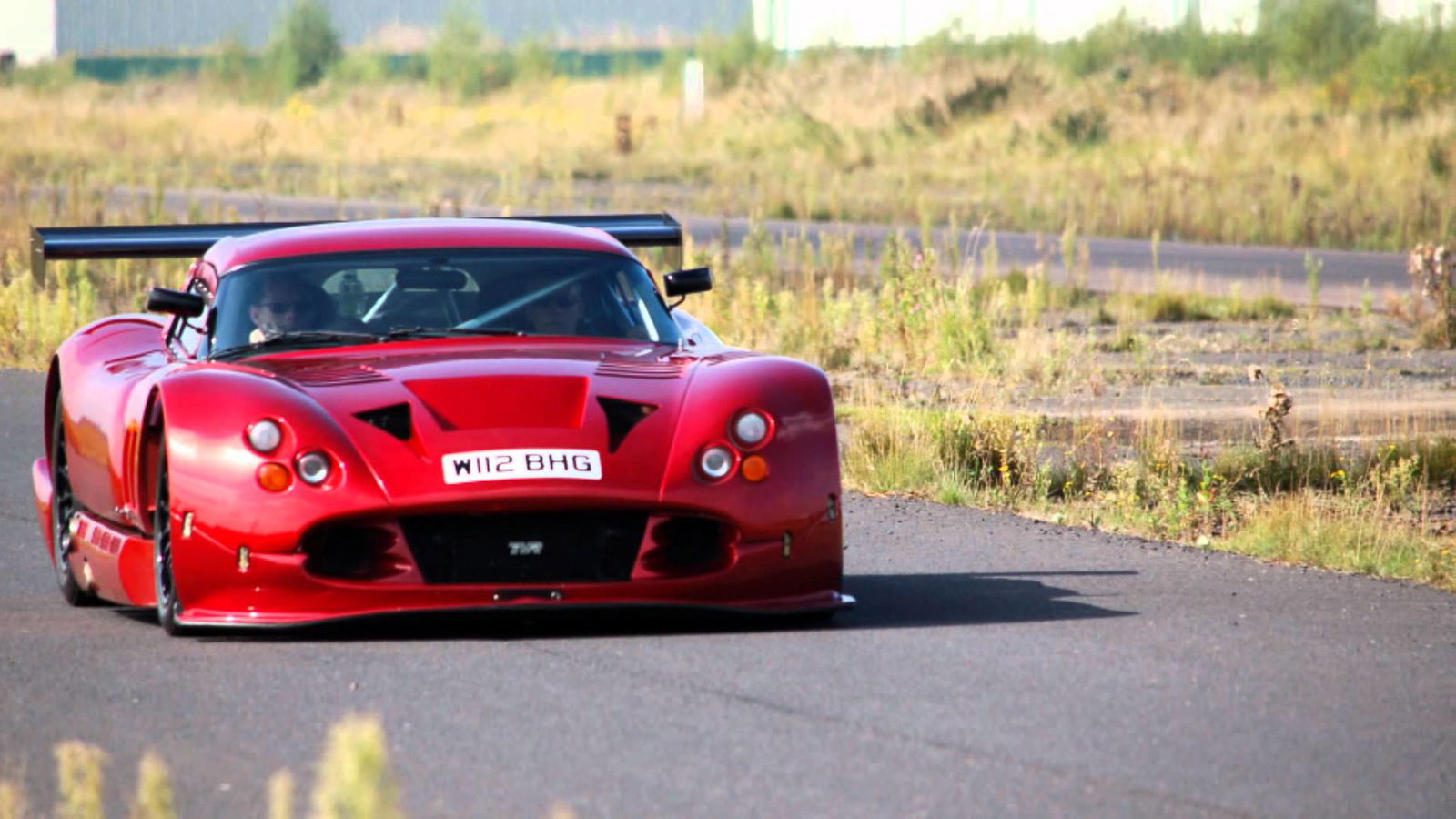
Wheeler was a huge, huge favor to the company. At first, he introduced the TVR S Series. He re-introduced the classic design elements from the original M Series. Because of this, he also introduced an entirely new lineup of cars featuring its new design elements such as the TVR Chimaera, TVR Griffith, TVR Cerbera, TVR Tuscan, TVR Tamora, TVR T350, TVR Typhon and TVR Sagaris.
The TVR Tuscan was unveiled in 1999, and was offered in two body styles, a hardtop and a Targa top. Five different inline six engine options were offered to customers. Four of these were variants of the 4.0L Speed Six making different amounts of power and torque, depending on the trim level selected. The last was a 3.6L Speed Six which produced the same amount of power as the lowest-level 4.0 L engine, although slightly less torque.
The TVR Sagaris was unveiled in 2003, and then produced in 2005. Based on the TVR T350, the Sagaris was designed with endurance racing in mind. Several design features of the production model lend themselves to TVR’s intentions to use the car for such racing. The multitude of air vents, intake openings and other features on the bodywork allow the car to be driven for extended periods of time on race tracks with no modifications required for cooling and ventilation. It only came with one engine option, which was an in-house developed Inline-6 making 406HP, paired to a 5-speed manual.
The TVR Cerbera was unveiled in 1996. The name is derived from Cerberus the three-headed beast of Greek legend that guarded the entrance of Hades. It only came in a hardtop body, but there were multiple engine options ranging from a 4.0L V6 making 350HP, to a 4.5L V8 making 440HP. The car itself was designed from the start as a four-seater. The rear seats are smaller than the front, a design commonly referred to as a “2+2”. However, the interior is designed so that the passenger seat can slide farther forward than the driver’s seat. This allows more room for the person sitting behind the front passenger. TVR have referred to this as a “3+1” design.
But the most extreme car was unveiled under the Wheeler ownership, the TVR Cerbera Speed 12. Road illegal, stripped down, lightweight, and powered by a merciless and brutal V12 Engine producing 800HP. The car was developed with the GT1 Endurance Championships in mind. The weight was kept down to 1000 kilograms and TVR reminded people that they were making a car that they thought would beat the McLaren F1 with the words “over 240 miles per hour” mentioned on several occasions. Priced at 188,000 British Pounds, it was the most expensive car the company has ever made.
Sadly due to endurance regulations constantly changing and financial issues, the project was scrapped.
Smolensky Ownership and the Death of TVR
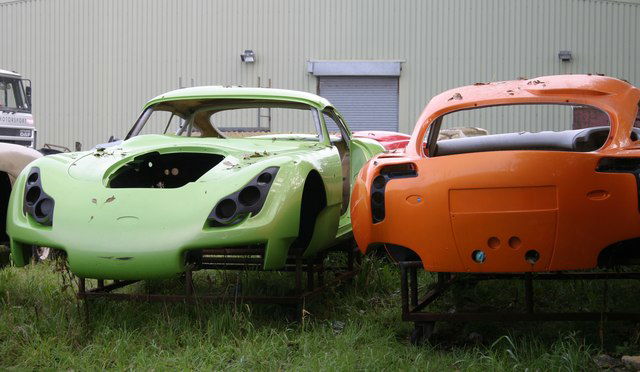
In July 2004, Nikolay Smolensky bought the company from Wheeler, for a rumoured £15 million. Despite his Russian nationality, Smolensky said he intended TVR to remain a British company. In April 2006, responding to falling demand and with production rumoured to have dropped from 12 cars a week to 3 or 4, and TVR laid off some of its 300 staff. At the same time, the firm announced plans to move to updated facilities in the Squires Gate district of Blackpool.
By December 2006, it emerged that Smolensky had split TVR into a number of different companies: the brand and intellectual property rights had been transferred to a core Smolensky company; TVR Motors held the licence to the brands and intellectual property in the UK, as well as sales and marketing of the brand; TVR Power - the parts and spares business - had been sold to a management buyout; and Blackpool Automotive held the factory and manufacturing assets.
On 13 December, Smolensky and production director Mike Penny resigned as directors of Blackpool Automotive, being replaced by Smolensky UK personal assistant Roger Billinghurst and 25-year-old Austrian Angelco Stamenkov. By 24 December Blackpool Automotive was in administration. On 8 October 2007 it was found that Smolensky was still in control of the company and was hoping to restart production, with a target of 2,000 cars to be sold in 2008. and on 11 July TVR announced the relaunching of the Sagaris as the Sagaris 2, at its new centre near Wesham in Lancashire, though this did not happen and the company took no action for another two years.
From that day on, they have been idle for almost a decade.
Rebirth
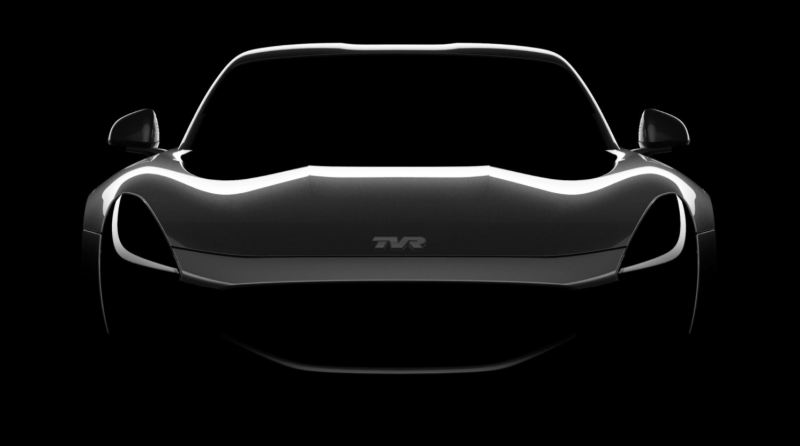
In June 2013, it was reported that Nikolay Smolensky had sold his entire ownership of TVR to TVR Automotive Ltd, a UK company led by Les Edgar & John Chasey. The following year, TVR was making spare parts once again, through the TVR Genuine Parts initiative to guarantee continuity of supply of parts for classic TVRs, and the formation of a new company TVR Parts Ltd which is exclusively licensed to sell Genuine Parts worldwide, taking over the last stock remaining when the factory closed and the previous TVR parts business operations of Racing Green, Clever Trevor and Multipart Solutions.
Two years later, after almost a decade of idling, plans for building a new car have been announced by the company. Set for unveiling this year, it was a part of a 10-year plan to release new models from 2017. Codenamed T37, the new car boasts an impressive specification, front engined, rear wheel drive, normally aspirated Cosworth V8 mated to a manual transmission that caused it to be described as “God’s own sports car”.
Further details of the engine were revealed on October 2015 as being based on the Ford Coyote 5.0L V8 with modifications by Cosworth including lighter flywheel, dry sump and unique engine management to generate from 450 to beyond 500 HP depending on the variant. And on 5 June 2017 it was announced the first public viewing and launch of the car would take place at the Goodwood Revival on 8 September 2017 to coincide with the marque’s 70th anniversary year.
We could not wait.
Comments
Tvr makes awesome cars and is named after a bloke called Trevor. Amazing.
If this post doesn’t get the extremely high up-votes it needs, I shall protest! Because it’s absolutely fabulous, I once rode in a TVR Cerbera 4.5 litre (with the red rose pack) and it was simply insane 😳 so quick, yet so light and with no traction aids.
Awesome post dude, I really do mean it 👍
I don’t see how people can like tvr but not like the corvette for being too “vulgar”. That pearlescent paint doesn’t exactly scream conservative.
Can’t wait to see the new TVR!
Even as an admirer of this masterpiece I thoroughly enjoyed, I have some slight remarks.
First off, there is an almost annoying lack of pictures (next time, make sure you have picture of every car you talk about, or as close to that as you can manage)
In the “Death of TVR” section, first paragraph, there is a mistake in the sentence layout (only one I could find, which is damn impressive considering the length of this post and the language used in it).
Great article mate! I learned a lot.
Very nice write up man, i done one myself a while back but it was no where near the detail of this, very well deserved editors pick man.
This is a great post! TVR is definitely one of my favourite manufacturers, seeing how I’ve had rides in a T350t, a Tuscan and a Sagaris haha
Great post! Deserved the Editor’s Pick! Very detailed. The TVRs I knew existed were the Tuscan, Sagaris (obviously), and the Cerbera Speed 12.
Learned a lot about TVR… I really wish the Cerbera Speed 12 is in a future Forza game. It’s bonkers. Keep up the good work!
Unbelievable post
Pagination